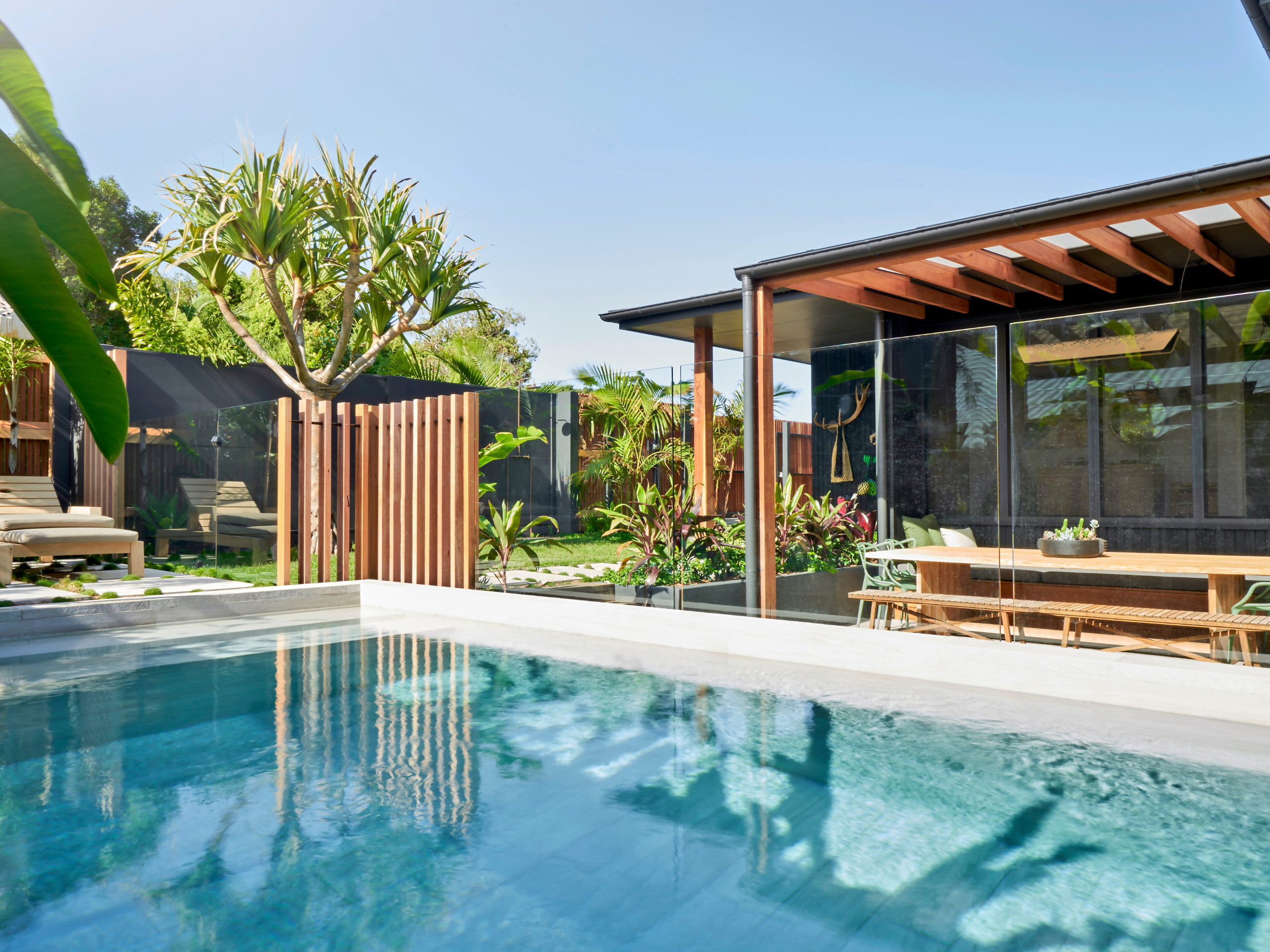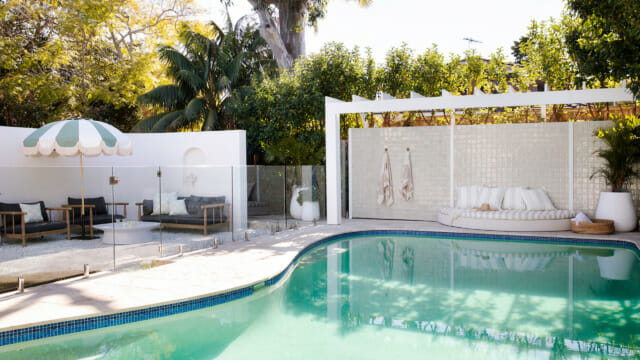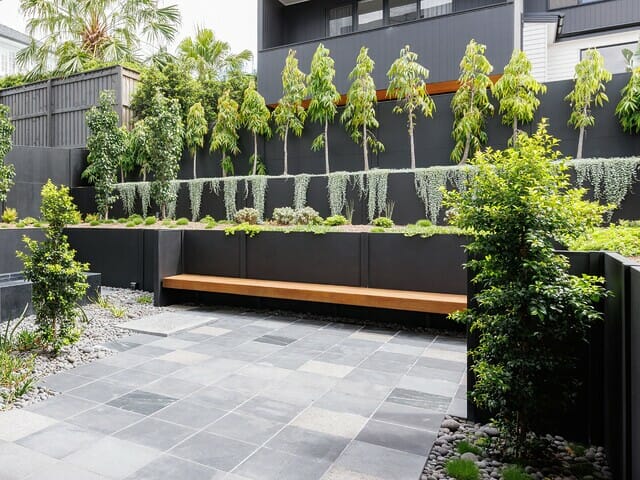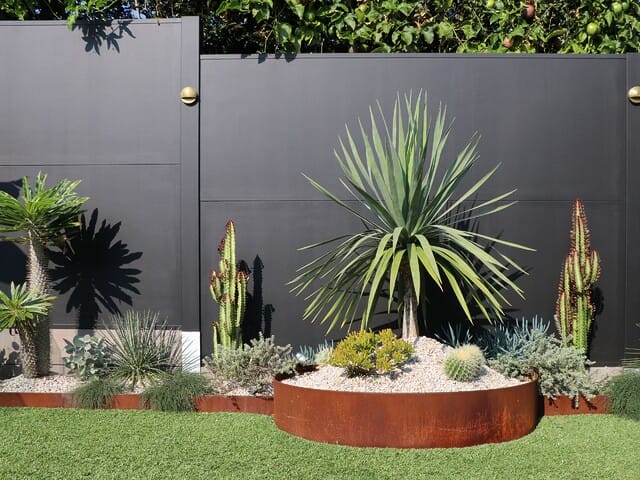Structure. Texture. Contrast. Balance. For this month’s DIY idea, we deep dive into how to design — and build — the perfect architectural garden for your home.
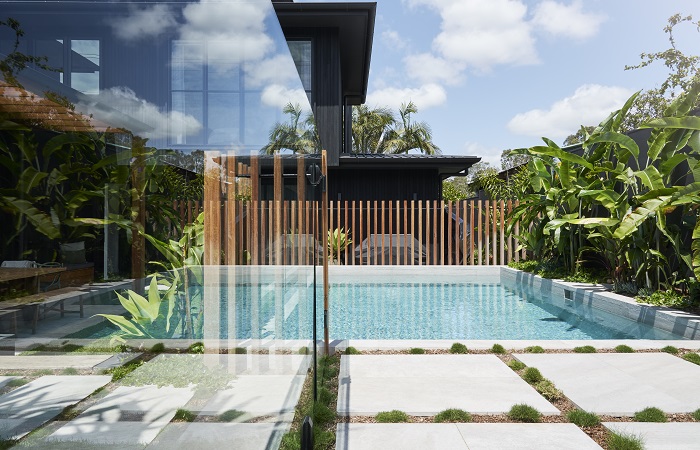

Structure
One of the most striking elements of an architectural garden is the structures and shapes it brings to your landscaping. However, that’s not to say it need to be angular or linear; the structure can be organic and oscillating, if that’s the shape you want to craft.
Here’s how to create shape and structure in your garden.
Structure in soft landscaping
To introduce structure into the soft landscaping elements (i.e. plants and organic matter), you must begin to look at plants for their overall shape. Are they long and thing, or round and wide? Are they rigid, or do they cascade? Do they have defined edges, or blurred ones?
There are many garden design apps that let you experiment with plant combinations, which are incredibly helpful when designing the layout of the plants. They can also include plant care advice; for instance, grouping plants based on watering needs or sunlight conditions is integral to a garden design that will succeed in real life.
However, this can also be easily achieved by sketching very basic shapes of plants and cutting them into stencils; tall, thin snake plants, short, spiky agave, round, fluffy fountain grass. Then, play around with the stencils; layer and organise the shapes until a particular combination feels right! You’ll need to do the plant care research separately, but at the very least, you can decide on the shape and structure of your architectural plants.
Case Study: Alisa & Lysandra choose SlimWall for architectural courtyard design
The structure of the garden must also take into consideration the architectural structure of the home. For instance, tall, linear plants draw the eye upward, so you might plant them under focal architectural features or amongst strong vertical lines of your exterior design. You might even structure a garden based on how a window or doorway will frame the view from inside. Or perhaps you’d rather combine linear and circular; planting round, soft shapes against a backdrop of angular lines can provide visual interest.
Whether you choose to harmonise or contrast is up to you and your personal aesthetic vision; what matters is that you are including the home’s ‘bones’ in your considerations.
Structure in hard landscaping
Structure is much easier in hard landscaping (i.e. garden edging, retaining walls, fences, arbors, pergolas, paving, etc.). The main idea here is interpreting the existing structure of your home and hardscapes, and designing the layout of your architectural garden to harmonise with those lines.
Follow the existing lines of your home; doorways, the edges of the home, pool edges. Mark out focal points, such as trees or water features; there are always lines to follow. These lines will help you structure your garden in a cohesive layout when it comes to installing decks, paths, lawn and garden edging, paving and planter boxes.
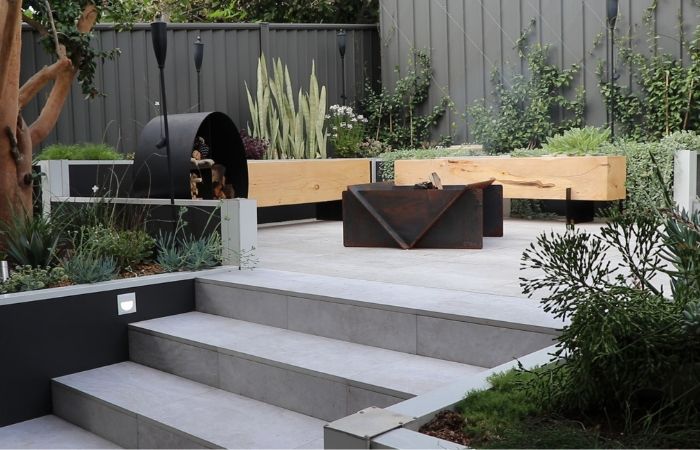

Case Study: @LittleDwellings transforms backyard with DIY retaining walls
Texture
Another strong element of architectural gardens is the understanding and meaningful use of texture. If you find that your garden lacks depth, or seems to blend into one ‘blob’, you may simply need to add some textural contrast.
Texture in soft landscaping
To harness the power of texture in softscaping, we must now take note of how each plant feels; both physically and visually. Does it have hard, waxy leaves or delicate, rippled ones? Is it smooth, furry or fluffy? How does it move in the wind; does it sway, do its tiny leaves shimmer or does it remain still in a breeze?
This also includes other organic features in your garden design; mulch, river stones, sand, feature logs or driftwood, well-placed boulders or bush rock. These natural elements offer rich textures and can take your garden design and elevate it to a work of art!
Texture in hard landscaping
Next, consider the materials which border or showcase your architectural garden. Each material offers a variety of textures, which can completely change the overall look and feel of a design.
For instance:
- Timber can either be varnished (manicured, refined, clean) or raw (earthy, natural, organic)
- Metal can either be polished (luxe), dull/brushed (modern but natural) or corroded (earthy, edgy, industrial chic)
- Concrete can either be rendered (premium, clean), polished (modern but refined) or raw (industrial, edgy)
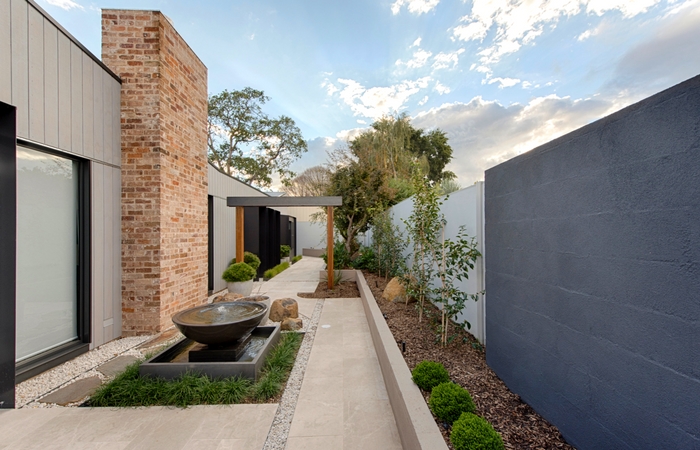

Case Study: SlimWall premium fencing showcases newly landscaped garden
Contrast
As mentioned above, the more contrast you can create, the better; our eyes respond best to these differences and create a layered experience for us. This is how you can use contrast in your architectural design.
Contrast in soft landscaping
So, we know how to categorise plants into different shapes and textures; now it’s time to mix them all together. By combining linear with round, fluffy with waxy, smooth with spiky, we create a garden design that celebrates the adversity of nature.
However, this doesn’t mean each plant needs to be completely different from the next; our eyes also like patterns and repetition. In fact, you can design a perfectly striking garden with just 3 or 4 different plant types, ranging in texture and structure!
This can be done in a few different ways. For a more organic feel, have a few of the same plants nestled into different parts of the garden. If you’re after a more structured design, create distinct layers or levels of the same or similar plants, with each row featuring a different shape or texture; for example, a row of yucca or snake plants as the highest level, fountain grass in the middle and dichondra silver falls as a ground cover.
Contrast in hard landscaping
Above, we explored how different finishes can affect the overall feel of the design. However, there’s no reason to stick to a single aesthetic; in fact, home design is all about combining different architectural styles.
By using a combination of materials and mixing textures, you create visual interest that makes each material a feature, rather than your eye becoming exhausted or bored by too much of the same. Merging luxe with industrial chic, earthy with refined, raw with polished, can unlock the perfect blend of textures to suit your garden.
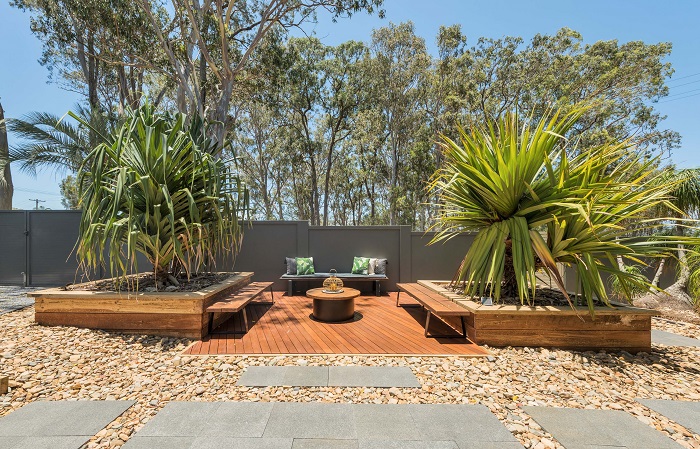

Case Study: VogueWall backdrop perfectly frames new front yard landscaping
Balance
Yin and yang; light and dark; contrast and harmony. Perhaps the trickiest element of all, balance is crucial to the successful execution of your garden design.
Balance is, in fact, the visual representation of gravity. In design, objects are not just small or large, dense or feathered; they are also heavy or light. Balance is the arrangement of objects so that the gravity is organised in a visually appealing way; it can be arranged symmetrically or asymmetrically, but must still maintain balance.
Symmetrical garden design is commonly used for formal gardens, to frame a central axis or striking architectural features or to look down upon for a higher storey. However, outside of these contexts, asymmetrical designs are usually best.
Balance in soft landscaping
Consider each plant as heavy or light; for instance, dense shrubs or waxy leaves are heavy, whilst grasses and feathered foliage is light.
Now, take your garden design and draw a line down the middle. Where are the dense spots? Are they too symmetrical? Are they all on one side? Do you want a mix of weights from top to bottom, or would you like to create a vertical gradient?
Balance will largely be a gut feeling; some prefer an even keel, whilst others love the quirky aesthetic of pronounced asymmetry.
Balance in hard landscaping
Considering structures cannot be moved easily, balance within hardscaping can usually be achieved with outdoor furniture, pots and planters.
However, if you have the means, there are more robust projects that can be introduced to fix an unbalanced backyard design. Decks, pergolas, planter boxes, paths, fences and feature walls can all be installed to fill a bare space or bring more structure to your garden.
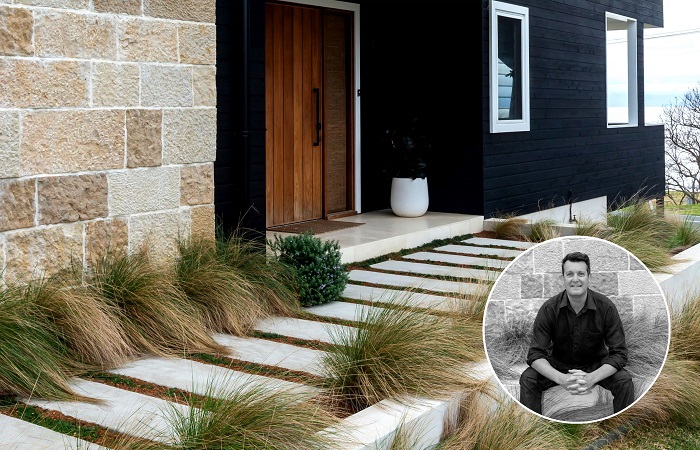

Expert Advice Interview: Choose the perfect garden for your home, with Outside Space
Matching your architectural garden to your home
Another element to designing the perfect architectural garden for your home…is understanding the architectural style of your home!
A mid-century modern style will pair incredibly with a desert-inspired drought tolerant garden. A Queenslander or Byron Bay home will benefit from tropical garden designs. Classical architecture lends itself to manicured topiary landscaping and circular design elements.
By understanding your architectural style, you can design a garden that harmonises with the rest of your home, rather than being a separate, disconnected space.
